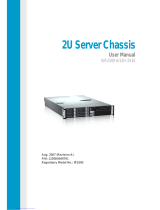
System Setup details..................................................................................................................................................28
System BIOS.................................................................................................................................................................28
iDRAC Settings utility................................................................................................................................................. 44
Device Settings............................................................................................................................................................44
Dell Lifecycle Controller...................................................................................................................................................44
Embedded systems management............................................................................................................................44
Boot Manager.....................................................................................................................................................................44
Viewing Boot Manager...............................................................................................................................................44
Boot Manager main menu......................................................................................................................................... 44
One-shot BIOS boot menu........................................................................................................................................45
System Utilities............................................................................................................................................................ 45
PXE boot............................................................................................................................................................................. 45
Chapter 5: Installing and removing system components.............................................................. 46
Safety instructions............................................................................................................................................................46
Before working inside your system............................................................................................................................... 47
After working inside your system.................................................................................................................................. 47
Recommended tools......................................................................................................................................................... 47
Front bezel.......................................................................................................................................................................... 47
Removing the front bezel.......................................................................................................................................... 47
Installing the front bezel............................................................................................................................................ 48
System cover..................................................................................................................................................................... 49
Removing the system cover..................................................................................................................................... 49
Installing the system cover....................................................................................................................................... 50
Backplane cover................................................................................................................................................................. 51
Removing the backplane cover.................................................................................................................................51
Installing the backplane cover.................................................................................................................................. 52
Air shroud............................................................................................................................................................................54
Removing the air shroud............................................................................................................................................54
Installing the air shroud..............................................................................................................................................54
Cooling fan assembly........................................................................................................................................................55
Removing the cooling fan assembly....................................................................................................................... 55
Installing the cooling fan assembly..........................................................................................................................56
Cooling fans........................................................................................................................................................................ 57
Removing a cooling fan..............................................................................................................................................58
Installing a cooling fan................................................................................................................................................59
Intrusion switch................................................................................................................................................................. 59
Removing an intrusion switch.................................................................................................................................. 59
Installing an intrusion switch.................................................................................................................................... 60
Mid drive tray......................................................................................................................................................................61
Removing the mid drive tray..................................................................................................................................... 61
Installing the mid drive tray.......................................................................................................................................62
Removing a drive blank from the drive carrier..................................................................................................... 63
Installing a drive blank into the drive carrier.........................................................................................................64
Removing a drive carrier from the mid drive tray............................................................................................... 65
Installing a drive carrier into the mid drive tray................................................................................................... 66
Removing a 3.5-inch drive from the drive carrier............................................................................................... 67
Installing a 3.5-inch drive into the drive carrier................................................................................................... 68
Drives................................................................................................................................................................................... 69
Removing a drive blank..............................................................................................................................................69
4
Contents





















